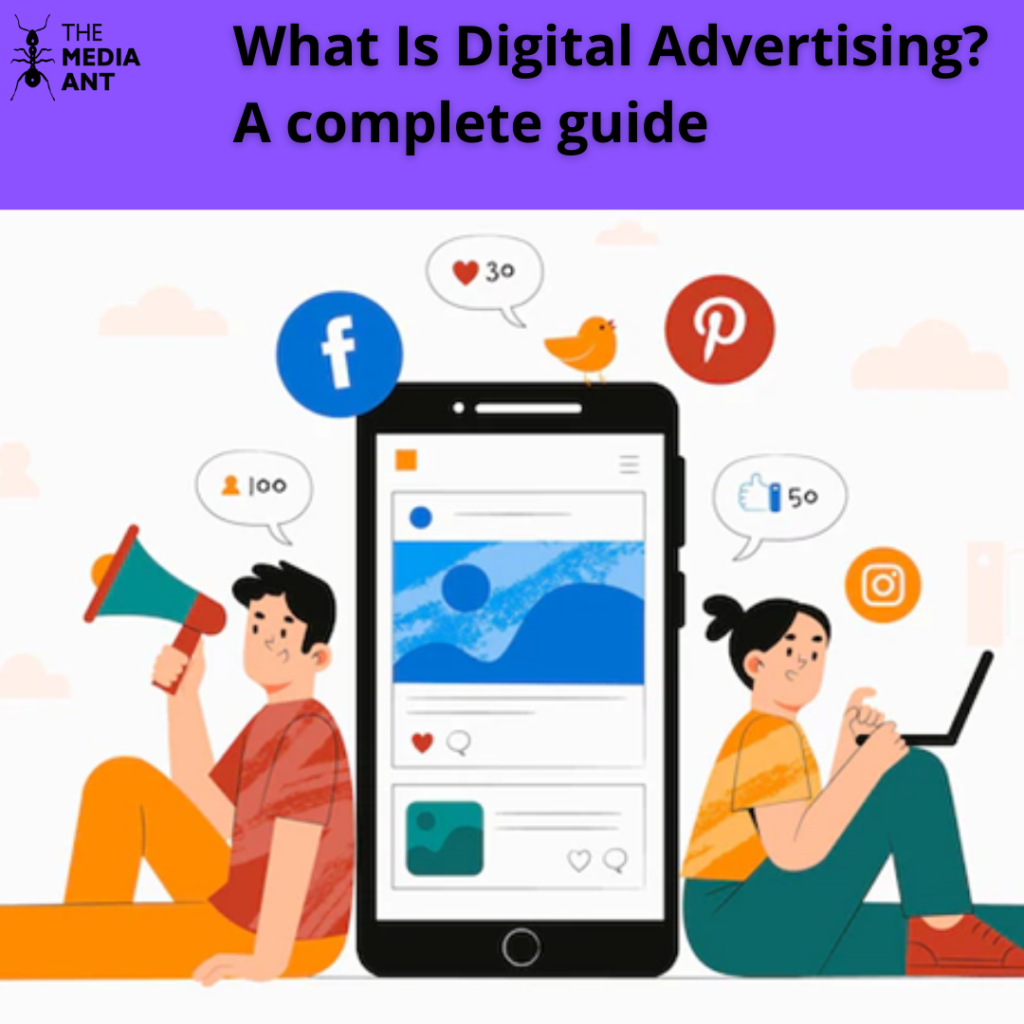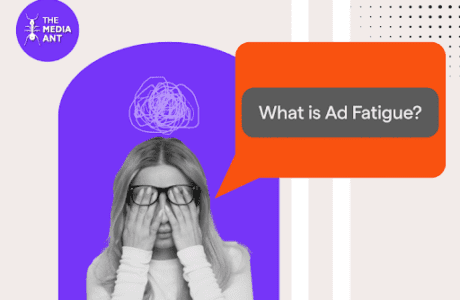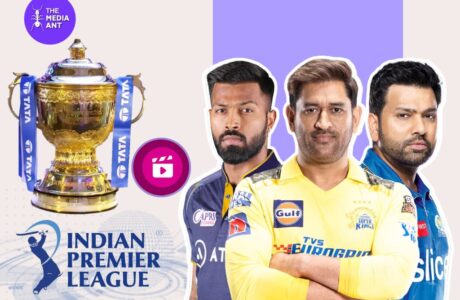What is Digital Advertising?
Digital advertising, also known as online marketing, refers to advertisements delivered through digital channels to promote brands and connect brands with potential customers using the internet and other forms of digital communication such as:
- Search engines
- Websites
- Social media
- Mobile apps
- Text messaging
- Web-based advertising
In short, if a marketing campaign uses any of the above online media channels, it is digital advertising.
Why do Digital Advertising?
Consumers today rely heavily on digital means to research products. Some 77% of customers research a brand online before engaging with it, according to HubSpot Research. Meanwhile, 51% of consumers say they use Google to research products before buying.
Digital marketing uses a variety of tactics to contact customers, with the goal of persuading them to make a purchase, increasing brand recognition, or simply engaging with your brand.
Social media, content marketing, website marketing, SEO (search engine optimization), and PPC (pay-per-click) advertising are all examples of modern digital marketing channels.
To harness the potential of digital advertising, marketers must go deep into today’s huge and sophisticated cross-channel environment to develop engagement marketing strategies that are successful.
Based on the data you acquire over time, engagement marketing creates meaningful relationships with new and returning consumers.
By engaging customers in a digital landscape, you increase brand recognition, establish yourself as a thought leader, and position your company at the forefront.
Difference Between Traditional and Digital Advertising?
Traditional advertising refers to the use of traditional mediums such as television, radio, newspapers, magazines, and billboards to promote products or services. These mediums have been around for decades and have proven to be effective in reaching a large audience. However, traditional advertising can be costly, and it can be difficult to measure the effectiveness of a campaign.
Digital advertising, on the other hand, refers to the use of digital mediums such as the internet, social media, mobile devices, and digital billboards to promote products or services. Digital advertising offers many advantages over traditional advertising, including lower costs, a more targeted reach, and the ability to track and measure the effectiveness of a campaign in real time.
One of the main advantages of digital advertising is the ability to target specific audiences. For example, with digital advertising, you can target your ads to specific demographics, such as age, gender, location, and interests. This allows you to reach the people who are most likely to be interested in your product or service.
Another advantage of digital advertising is the ability to track and measure the effectiveness of a campaign in real time. With traditional advertising, it can be difficult to measure the success of a campaign, but with digital advertising, you can track how many people are clicking on your ads, how many are converting to customers, and what your return on investment is. This allows you to make adjustments to your campaign in real-time to ensure that it is as effective as possible.
In summary, traditional advertising and digital advertising are two different ways of promoting products or services. Traditional advertising uses mediums such as television, radio, newspapers, magazines, and billboards, while digital advertising uses digital mediums such as the internet, social media, mobile devices, and digital billboards. Digital advertising offers many advantages over traditional advertising, including lower costs, a more targeted reach, and the ability to track and measure the effectiveness of a campaign in real-time.
How does Digital Advertising Work?

Digital marketing uses a variety of tactics to accomplish a single primary objective via diverse means.
Consider digital marketing to be a business, with the tactics serving as the various divisions’ personnel. Everyone who works for the same company has the same goal in mind: to make the company successful.
Similarly to this, all digital marketing techniques cooperate to drive traffic, raise awareness, and convert leads into repeat consumers for the company.
Having stated that, let’s get further into more specifics on the seven key digital marketing techniques that we have just highlighted.
Let’s have a look at the –
Different Types of Digital Advertising

1. Display Ads
Display ads are a type of online advertising that appears on websites, apps, and other digital platforms. They are typically made up of text, images, and/or videos, and are designed to promote a product, service, or brand. Display ads can take many forms, such as banner ads, text ads, and interstitial ads.
Banner ads are the most common type of display ad. They are typically rectangular in shape and appear at the top or bottom of a web page. They are usually animated and include images, text, and sometimes videos.
Text ads are a type of display ad that is made up of text only. They are similar to search ads but appear on websites and other digital platforms.
Interstitial ads are full-page ads that appear between two pages of content on a website or app. They are typically used to promote a product or service and can include text, images, and videos.
Display ads can also be targeted to specific audiences based on factors such as demographics, interests, and browsing behavior. This is achieved through technologies such as cookies and pixels.
Display ads can be an effective way to reach a large audience and drive brand awareness. They can be a great way to reach a new audience, increase brand visibility, and drive traffic to your website. However, they can be costly to run and the audience might not always be engaged with the ad.
2. Video Advertising
Video advertising is a form of digital advertising that uses videos to promote a product, service, or brand. It can include pre-roll ads that play before a video, mid-roll ads that play during a video, and post-roll ads that play after a video. Video advertising can be used on platforms such as YouTube, Vimeo, and other video streaming sites, as well as on social media platforms.
3. Search Ads
Search ads are a form of digital advertising that appear at the top or bottom of a search engine results page. They are triggered by specific keywords or phrases that a user types into a search engine, such as Google or Bing. Search ads are typically text-based and include a headline, a description, and a link to a website or landing page.
4. Native Ads
Native ads are a form of digital advertising that is designed to blend in with the content of a website or app. They are typically made up of text, images, or videos and are designed to look and feel like the content surrounding them. Native ads can be used on news sites, social media platforms, and other websites or apps.
5. Social media Advertising
Social media advertising is a form of digital advertising that uses social media platforms to promote a product, service, or brand. It can include sponsored posts, promoted tweets, or sponsored stories on platforms such as Facebook, Instagram, and Twitter. Social media advertising can be targeted to specific audiences based on demographics, interests, and browsing behavior.
6. Online streaming advertising
Online streaming advertising is a form of digital advertising that uses audio and video streaming platforms to promote a product, service, or brand. This can include pre-roll and mid-roll ads on platforms such as Spotify, Pandora, and other streaming services.
7. Audio advertising
Audio advertising is a form of digital advertising that uses audio to promote a product, service, or brand. It can include radio spots, podcast ads, and audio banners on websites. Audio advertising can be an effective way to reach a target audience while they are commuting, working out, or doing other activities.
Digital Advertising Metrics
1. Clicks
A click is an activity that is done on a website by an Internet user with the simple click of a mouse. The click measuring process combines all sorts of clicks combining all sorts of clicks together (browser, download, exit, and action). A distinction must be made between a click and a visit: a visit is frequently created by a click (on a campaign, on an email, etc.), however, a visit may contain further clicks during the visit (campaigns, e-mails, self-promotion).
2. Impressions
Each time your ad appears on a search result page or another site in the Google Network, an impression is recorded.
3. CTR
The clickthrough rate (CTR) may be used to determine the effectiveness of your keywords, advertising, and free listings.
CTR is calculated by dividing the number of clicks on your ad by the number of times it is shown: clicks impressions = CTR. For instance, if you received 5 clicks and 100 impressions, your CTR would be 5%.
4. Reach
The number of persons in a target demographic that are exposed to a single ad provided is referred to as reach. Reach does not grow with successive exposures to the same viewer, which is referred to as frequency instead.
Conversion Rate
5. ROAS
ROAS is a marketing statistic that evaluates the effectiveness and financial return of a digital advertising strategy, campaign, or ad group.
ROAS is calculated by dividing Total revenue by Total cost, i.e,
ROAS=Total Revenue/Total Cost
6. Advertising Cost of Sales
Total advertising costs are divided by sales income to get the A to S. The advertising-to-sales ratio is intended to demonstrate if the resources spent by a company on an advertising campaign contributed to produce new sales, and to what degree those sales were generated.
How to plan Digital Advertising for your Business

Digital advertising is the process of promoting a product, service, or brand through various forms of digital media. It can include tactics such as search engine optimization (SEO), social media marketing, email marketing, and pay-per-click advertising (PPC). To get started with a digital advertising plan for your business, it’s important to define your goals and identify your target audience.
1. Define your Goals
One of the first steps in digital marketing is to define your goals. These goals should be specific, measurable, attainable, relevant, and time-bound (SMART). For example, your goal may be to increase website traffic by 30% within the next three months. Or you may want to generate more leads or sales through your digital channels.
2. Identify your target audience
Once you have defined your goals, it’s important to identify your target audience. This includes understanding their demographics, psychographics, and behavior. For example, you may be targeting young professionals who are interested in health and wellness products. Or you may be targeting stay-at-home parents who are looking for ways to save money.
3. Establish a Budget
Establishing a budget for each digital channel is another important step in digital marketing. This includes determining how much you will spend on paid advertising, such as PPC or social media ads, and how much you will allocate for content creation, such as blog posts or videos.
4. Strike a good balance between paid and free digital strategies
It is also important to strike a good balance between paid and free digital strategies. Paid strategies, such as PPC or social media ads, can drive immediate results but can be costly in the long run. On the other hand, free strategies, such as SEO or content marketing, take longer to see results but can be more cost-effective in the long run.
5. Create engaging content
Creating engaging content is also an essential part of digital marketing. This can include blog posts, videos, infographics, ebooks, and more. The goal of creating engaging content is to attract, engage, and convert your target audience.
6. Optimize your digital assets for mobile
Optimizing your digital assets for mobile is another important step in digital marketing. As more and more people access the internet through their smartphones and tablets, it’s important to make sure that your website and other digital assets are mobile-friendly.
7. Conduct keyword research
Conducting keyword research is also an important part of digital marketing. This includes identifying the keywords and phrases that your target audience is searching for, and then incorporating those keywords into your website, blog posts, and other digital assets.
8. Iterate based on the analytics you measure
Finally, it’s important to iterate based on the analytics you measure. This includes tracking your website traffic, conversion rates, and other important metrics, and then making adjustments to your digital marketing strategy as needed. Some of the important analytics metrics to track would be website traffic, bounce rate, conversion rate, customer lifetime value, customer acquisition cost, etc.
Overall, digital marketing can be a complex and ever-changing process. But by following these steps, you can create a digital marketing strategy that is effective, efficient, and tailored to your specific goals and target audience.
Now, that we have a basic idea about digital advertising, its usage, and planning, we need to look at the execution part. When it comes to planning and execution of an advertisement or campaign it can be overwhelming, in that case, it is best to contact an agency, here is our recommendation-
Best Digital Advertising Agency in India
The Media Ant is a leading digital advertising agency in India with over 10 years of experience in the industry. With a strong team of experts, the agency has served more than 3000 clients across various industries, providing them with cutting-edge digital marketing solutions. Whether it is social media marketing, search engine optimization, or influencer marketing, The Media Ant has the expertise to help businesses achieve their goals. The agency’s focus on delivering measurable results and its commitment to client satisfaction have helped it become one of the most trusted names in the Indian digital advertising space.
Now, that we have analyzed why and how to do digital advertising let us have a look at a few examples of digital advertising campaigns
Examples of Digital Advertising Campaigns
There are generally three major types of digital advertising that brands prefer to go with, them being-
- Search Digital Ads
- Social Media Digital Ads
- Video Display Ads
- Online Display Ads
We will discuss each of these in detail, along with examples.
1. Search Digital Ads
What is Search Digital advertising?
Search digital advertising often called paid search advertising or search engine marketing involves placing digital advertisements inside search engine results. Companies that run search advertising campaigns pay a small fee each time someone clicks on one of their ads.
Search Digital Advertising Examples
Search Digital advertising examples will help you understand how your ad will appear in a google search.
2. Social Media Digital Ads
What is Social media digital advertising?
It is a type of digital marketing that utilizes social networks such as Facebook, Twitter, and Instagram to deliver paid ads to your target audience.
Social media ads are a quick and effective way to connect with your consumers and boost your marketing campaigns.
Social Media Digital Advertisement Examples
Are you planning to design the greatest social media marketing campaigns that will generate money for your company?
These tremendous social media digital advertisement examples might assist you!
Almost 74% of people use social media platforms to make a purchase choice. Social media is a great tool to increase brand recognition, advertise your products and services, and reach consumers online.
And with these fantastic social media digital advertisement examples to guide you, you’ll be able to increase your sales and earnings. Continue reading to find out more!
1. Zomato
Establish your brand’s tone and persona
The brand often plays around with humor, metaphors, and ideologies garnering a good amount of social media following. They share updates and announce things that matter to them, big and small.
The faces behind the brand have come grown into people who stand by their values, irrespective of consequences. They have even tried their hand at Original content!
It was just another July afternoon until a tweet appeared on Zomato’s timeline – Guys, kabhi kabhi ghar ka khana bhi kha lena chahiye (Guys, sometimes you should have home food too).
Coming from a food tech unicorn – valued at $2.6 billion at last count – which takes in millions of orders for home delivery from restaurants, the tweet went viral and invited several other leading brands – YouTube India, Amazon Prime, Fox Star, Jio Saavn and many more – to join in. (Source)
The ‘anti-marketing’ post, not only worked well – the sheer scale of its virality was surprising even for Zomato.
2. Snickers
Hold an Exciting and Engaging contest
In this Snickers social media marketing example, they offer a contest in which people submit their rookie mistake on the Snickers website for a chance to win tickets to the upcoming Super Bowl.
By introducing exciting competitions like these into your social media strategy, you can help generate more discussion about your business and encourage more customers to participate on your social media page, therefore increasing your reach and exposure online.
3. Coca-Cola
Bring on the Emotions
In this post, Coca-Cola demonstrates its social media campaign as “#TogetherTastesBetter.” Coca-Cola is adept at appealing to its followers’ emotions by asking them to recall someone who has mentored or encouraged them.
Associating your brand with emotions is always a win-win situation. Emotional and personalized messages are a very good way to connect with consumers.
Implementing an emotional marketing campaign among your followers may improve leads and conversions while also highlighting your brand’s personality and values.
Are you ready to start implementing effective social media strategies that will drive revenue for your business?
Top-level social media marketing services from The Media Ant can help.
3. Video Display Ads
What is a digital video in advertising?
Digital video advertising is a part of digital advertising that displays video ads – either standalone or within online video content.
This includes lots of formats designed for various environments, such as banner video, connected TV, or other OTT services.
Video Digital Ad Examples
Now, we will discuss a few iconic Video Digital Ad Examples that can help your brand to plan your campaign to create the next best Video Digital ad example.
1. Dove: Real Beauty Sketches
Dove asked several women to describe themselves to a forensic artist as he sketched their faces without seeing them. He then sketched them again based only on descriptions provided by others in the group.
It was inevitable that the two representations wouldn’t match exactly, but the curveball was just how altered women’s perceptions are about their own faces.
2. PregaNews: #YourSecondHome
The idea of a pregnant lady working is not that popular in India, considering the facilities, work environment, and associated stereotypes.
Through this social video marketing campaign, Prega News urged employers to take special care of their pregnant employees.
3. Amazon: Mom Be a Girl Again
This Campaign series catches the fancy of those who let their inner child die and let go of their passion in favor of their stressful daily lives.
4. Online Display Ads
What are Online display ads?
Online display advertising is a form of online keyword advertising that promotes a brand message visually using text, logos, videos, photographs, or other graphics.
Digital advertising displays target specific user demographics to increase the ads’ effectiveness and overall campaign success.
Online Display Ad Examples
By looking at these Online Display Ad Examples, you’ll understand that even an image can help your brand run a successful campaign.
1. Urban Decay
What makes it worth noticing?
- Striking Visuals
- Distinctive messaging
2. Adobe
What makes it unique from other campaigns
- Eye-catching imagery with vivid colors
- Simple messaging
3. Ridge Display Ad Example
Realizing your customer’s pain point and making it into a campaign
- This wallet promises to address one literal pain point and
- One security one all in a single slim package, appealing to men everywhere.
Advantages of Digital Advertising for Brands
Digital advertising offers many advantages for brands, including:
Increased reach: Digital advertising allows brands to reach a large and diverse audience through various online channels such as social media, search engines, and websites.
Targeted advertising: Digital advertising allows brands to target specific groups of people based on demographics, interests, and behaviors.
Measurable results: Digital advertising provides detailed data on how campaigns are performing, which allows brands to make data-driven decisions and optimize their campaigns for better results.
Cost-effective: Digital advertising is often more cost effective than traditional advertising methods, as it allows brands to reach their target audience at a lower cost per impression.
Flexibility: Digital advertising allows brands to easily adapt and adjust their campaigns in real time based on the results they are seeing.
Interactivity: Digital advertising allows for a more interactive experience for the users, which can increase engagement and interaction with the brand.
Mobile-friendly: With the rise of mobile usage, digital advertising is easily accessible to mobile users and can be optimized for mobile devices.
Conclusion
In conclusion, digital advertising has become an essential tool for brands to reach and engage with their target audience. The ability to target specific groups of people, measure campaign performance, and adapt campaigns in real-time offers brands significant advantages over traditional advertising methods. As more and more people spend their time online, digital advertising provides a cost-effective and flexible way for brands to connect with consumers. Additionally, with the rise of mobile usage, digital advertising is easily accessible to mobile users and can be optimized for mobile devices. Overall, digital advertising has proven to be a powerful tool for brands to grow their business and stay ahead of the competition.
FAQs on Digital Advertising
1. What are the Benefits of Digital Advertising?
Digital Advertising offers many benefits, such as increased reach, targeted advertising, measurable results, cost-effectiveness, flexibility, interactivity, and mobile-friendliness. It is an essential tool for brands to reach and engage with their target audience, measure campaign performance, and adapt campaigns in real time.
2. What are the 2 main reasons to use Digital Advertising?
The two main reasons to use digital advertising are
1) The ability to reach and target specific groups of people and
2) The ability to measure campaign performance and make data-driven decisions. Digital advertising allows brands to reach a large and diverse audience through various online channels and provides detailed data on how campaigns are performing.
3. How can you measure the success of my Digital Advertising campaign?
The success of a digital advertising campaign can be measured through a variety of metrics, such as click-through rate, conversion rate, cost per acquisition, engagement rates, return on investment, and customer lifetime value. Additionally, A/B testing can be used to compare the performance of different ads and optimize them for better results. The key is to determine the objectives of the campaign, set up tracking mechanisms, and regularly review the performance data to optimize and improve the campaign.
4. What are some common mistakes to avoid in Digital Advertising?
Some common mistakes to avoid in digital advertising include: failing to clearly define the campaign goals and target audience; neglecting to regularly monitor and optimize campaign performance; struggling to A/B test ads; using low-quality images and videos; not using retargeting; and failing to properly track conversions.
5. What are impressions in Digital Advertising?
In digital advertising, an impression refers to the number of times an ad is displayed on a webpage or within an app. It’s a metric that indicates how many times an ad has been seen by users. For example, if an ad is displayed on a webpage and the webpage is viewed by 100 users, the ad has received 100 impressions. Impressions are used to measure the reach and visibility of an ad campaign, and they’re often used to bill advertisers for their campaigns. It’s important to note that an impression does not indicate if the ad was seen or if the user engaged with it; it just indicates that the ad was loaded on a webpage where it had the opportunity to be viewed.
6. What are the 3 goals of Digital Advertising?
The three main goals of digital advertising are
1) Increasing brand awareness and visibility
2) Driving website traffic and leads, and
3) Promoting conversions and sales
The goal of increasing brand awareness and visibility is to make the brand more recognizable and reach a wider audience. The goal of driving website traffic and leads is to increase the number of people visiting the website and to generate potential customers. Finally, the goal of promoting conversions and sales is to convert website visitors into customers by encouraging them to make a purchase or take a desired action.






Great read regarding aspects on digital advertising as well as its benefits for continued business success. Thanks for this.